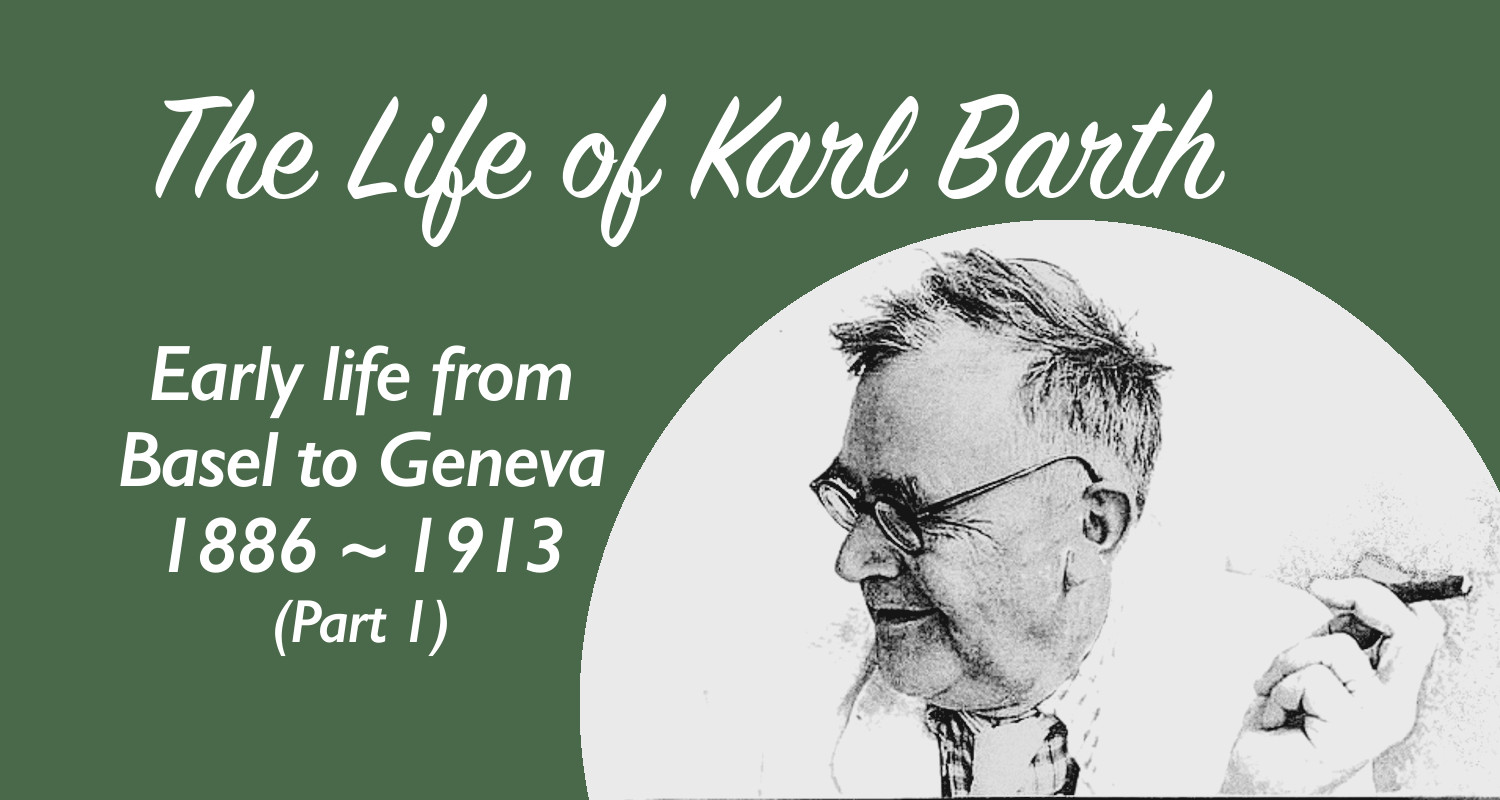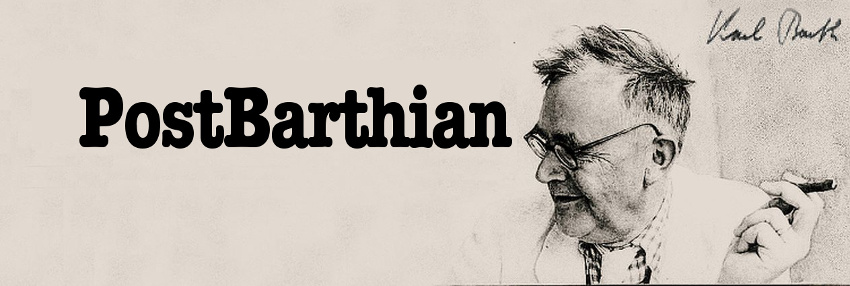
Karl Barth (May 10, 1886–December 10, 1968) was a Swiss Reformed Protestant theologian and arguably the greatest theologian of the last two centuries. He was a prolific author who is most well known for his commentary on The Epistle to the Romans (2nd ed.), his thirteen volume systematic theology the Church Dogmatics (CD), and his contributions to the Barmen Declaration which was instrumental to the German Confessing Church during World War II.
Pope Pius XII said Barth was “the greatest theologian since Thomas Aquinas.” The Scottish Protestant theologian, T.F. Torrance who knew Barth and was a translator of the Church Dogmatics described Barth as "the great Church Father of Evangelical Christendom, the one genuine Doctor of the universal Church the modern era has known. . . . Only Athanasius, Augustine, Aquinas and Calvin have performed comparable service" (CD IV/4, preface). John D. Godsey, professor emeritus of Wesley Theological Seminary, renowned Bonhoeffer scholar and protege of Barth said: "In [Barth] a Church Father has walked among us." Love Barth or hate him, his contribution to theology today may not be overstated.
In this Life of Karl Barth series, I will introduce you to the person and works of Karl Barth.
Karl Barth's Early Life
Karl Barth was born in Basle on May 10, 1886 to his parents Johann Friedrich ("Fritz") Barth (1852–1912) and Anna Katharina (Sartorius) Barth (1863–1938) [1]. Fritz Barth taught at the College of Preachers and his mother was a daughter of a conservative Reformed pastor [2]. "Karli" has he was familiarly known in his youth, had two younger brothers Peter Barth (1888–1940) and Heinrich Barth (1890–1965), and two sisters Katharina and Gertrude. Peter Barth studied philosophy and became a Calvin scholar, and Heinrich also studied philosophy. Karl Barth spoke and wrote in German, but Barth was not German–he was a Swiss who loved his homeland of Switzerland. Also, the 'h' in Barth is silence, and so Barth is pronounced 'bart' (like 'heart' and not like 'hearth').
Beginnings: Berne, Berlin, Tübingen and Marburg
Karl Barth's eduction was supervised by his father Fritz, and began at the University of Berne in 1904, under the guidance and advice of his father [3]. Karl's desire for a liberal protestant education clashed with his father's desire for him to follow his more 'positive' line of Christianity [4], and so Barth bounced between multiple universities in order to appease his father yet also achieve his own desired eduction. When Barth finished his preliminary examinations at Berne, he desired to transfer to Marburg, but his father disapproved of Marburg's liberal theology, so they compromised and Karl went to study in Berlin, which was more neutral theologically [5].
While in Berlin, Barth sat under the famous theologian Adolf von Harnack (1851–1930), whom Barth came to hold in high regard [6] and embraced Harnack's liberal theology. Barth was also influenced by the famous Friedrich Schleiermacher (1768–1834), and most importantly, it was then that Barth first became a 'committed pupil and follower of Wilhelm Herrmann' (1846–1922) [7]. When Barth returned from Berlin in April 1907, his parents were unhappy with his liberal theological inclinations, and they were dissatisfied with Karl Barth's new relationship with a bernese girl named Rösy Münger [8]. At the end of the summer of 1907, Karl's parents intervened and compelled Karl to end his relationship with Rösy and he was sent off to study at Tübingen 'at the bidding of my father' [9]. Karl was unhappy at Tübingen, and remained there a short time before transferring to Marburg to finally study under Wilhelm Herrmann, who became Barth's greatest teacher.
Pastor in Geneva and Nelly Hoffman
Karl Barth left Marburg in August 1909 to be an assistant pastor in Geneva where Barth delivered his lectures in the same room where the famous reformers John Calvin and John Knox had preached [10]. It was at this time, that Karl finally conceded to his parents wishes and ended his relationship with Rösy Münger (May 1910) and a year later became engaged to Nelly Hoffman (May 1911). Karl Barth met his future wife Nelly Hoffmann (August 26, 1893–1976) in a first-year confirmation class that Karl was teaching as an assistant pastor in the Madeleine church in Geneva [11]. Nelly was not yet eighteen years old when they were engaged on May 16th, 1911 [12], a year after Karl was forced to end his relationship with Rösy Münger, and so many conclude that Nelly Hoffman and Karl Barth's marriage was essentially arranged.
Karl and Nelly were married on 27 March, 1913 [13] and their marriage was a happy one, especially during the first ten years, and they remained married for 55 years (until Karl died in 1968), and they had five children: Franziska, Markus, Christoph, Matthias, and Hans Jakob [14]. Barth's children became established theologians as well: Markus became a theological dialog partner with his father Karl and published important theological books, especially on Baptism (cf. W. Travis McMaken's Sign of the Gospel); Christoph also had an academic career; and Matthias died tragically in a climbing accident when he was 20.
After these tumultuous times in Barth's personal life, he decided to leave Geneva in 1911 and 'like my father before me, I came to the Aargau as a pastor, to Safenwil, an agricultural and industrial community' [15]. It was in Safenwil that Karl Barth became known as the Red Pastor, and it was from this soil that his academic career and world wide fame sprouted.
The Life of Karl Barth series:
- The Life of Karl Barth: Early Life from Basel to Geneva 1886-1913 (Part 1)
- The Life of Karl Barth: The Red Pastor of Safenwil 1909-1921 (Part 2)
- The Life of Karl Barth: The Romans road to the Church Dogmatics 1921-1930 (Part 3)
- The Life of Karl Barth: Protesting in Nazi Germany 1930-1935 (Part 4)
- The Life of Karl Barth: Professor of Systematic Theology at the University of Basel during World War II 1935-1946 (Part 5)
- The Life of Karl Barth: Church Dogmatics Vol III: The Doctrine of Creation 1945-1951 (Part 6)
- The Life of Karl Barth: Church Dogmatics Vol IV: The Doctrine of Reconciliation 1953-1967 (Part 7)
- The Life of Karl Barth: Trip to America in 1962 (Part 8)
- Coming soon . . .
Sources:
1. Busch, Eberhard. Karl Barth: His Life from Letters and Autobiographical Texts. W.B. Eerdmans Pub. Co., 1994. Print. 1.
2. John Webster, Karl Barth, Continuum, London:2000, pp. 2-3.
3. Ibid. Busch. 33.
4. Ibid. Busch. 40.
5. Ibid. Busch. 38.
6. Ibid. Busch. 39.
7. Ibid. Busch. 40.
8. Ibid. Busch. 41.
9. Ibid. Busch. 43.
10. Ibid. Busch. 53.
11. Ibid. Busch. 59.
12. Ibid. Busch. 59.
13. Ibid. Busch. 71.
14. Ibid. Busch. 503.
15. Ibid. Busch. 60.
Related: Anna Barth, Anna Katharina Sartorius, Biography, early life, Fritz Barth, Johann Friedrich Barth, Karl Barth, life of karl barth, Nelly Barth, Nelly Hoffman, Rösy Münger



Leave a comment